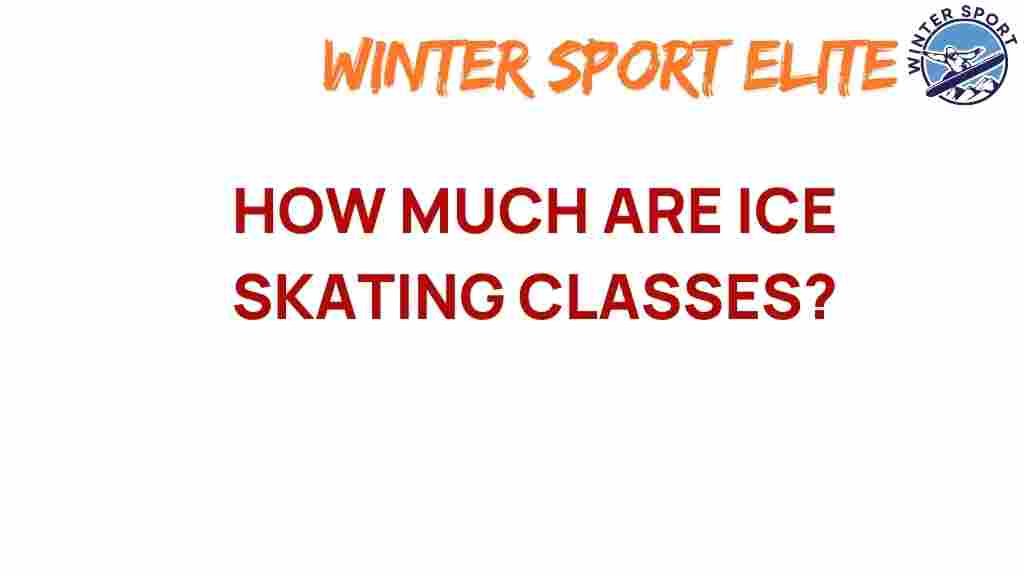The True Cost of Ice Skating Classes: What You Need to Know
Ice skating is a beloved pastime for many, offering a unique blend of fun, fitness, and skill development. However, if you’re considering enrolling in ice skating classes, it’s essential to understand the costs involved in training, lessons, and the necessary equipment. This comprehensive guide will walk you through everything you need to know about the expenses associated with ice skating classes, whether you’re a beginner or looking to advance your skills in figure skating or hockey.
Understanding Ice Skating Classes
Ice skating classes come in various forms, catering to different interests such as recreational skating, figure skating, and ice hockey. Each of these disciplines has its own set of costs associated with lessons and training. Let’s break down the main factors influencing the overall cost of ice skating classes.
Types of Ice Skating Classes
- Recreational Skating: Ideal for beginners or those looking to skate for fun.
- Figure Skating: Focuses on artistic moves and choreography, often requiring specialized coaching.
- Ice Hockey: Involves training specific to hockey skills and gameplay.
Cost Breakdown of Ice Skating Classes
The costs associated with ice skating classes can vary widely based on several factors. Here’s a detailed breakdown:
1. Class Fees
The first and most obvious cost is the fee for the ice skating classes themselves. Here’s what you need to know:
- Group Lessons: Typically range from $10 to $30 per session.
- Private Lessons: Can cost anywhere from $40 to $100 per hour, depending on the instructor’s experience.
- Package Deals: Many rinks offer discounts for purchasing multiple lessons at once, which can help reduce costs.
2. Ice Rink Fees
Most ice rinks charge a fee for using their facilities, which can be included in your lesson cost or charged separately. Here are some common fees:
- Public Skating Sessions: Usually range from $5 to $15.
- Ice Time for Coaches: If you’re taking private lessons, your coach may need to pay for ice time, which could be an additional cost.
3. Equipment Costs
Investing in proper ice skating equipment is crucial for both safety and performance. Here’s a rundown of what you’ll need:
- Skates: Beginner skates can range from $50 to $150, while figure skates and hockey skates can go from $150 to over $500.
- Protective Gear: For hockey, this includes helmets, pads, and gloves, which can total $200 to $500 or more.
- Attire: Figure skating outfits can be expensive, often costing $100 or more, while hockey jerseys and shorts can be found for $50 to $100.
4. Additional Costs
Beyond the basics, there are other costs to consider:
- Insurance: Some rinks require liability insurance, which can cost around $50 annually.
- Competition Fees: If you’re pursuing figure skating, entering competitions can add significant costs, ranging from $50 to $200 per event.
- Travel Expenses: Competing or attending training camps may require travel, adding to your overall expenses.
Affordability and Budgeting for Ice Skating Classes
While ice skating classes can be costly, there are ways to make them more affordable:
- Look for Discounts: Many ice rinks offer discounts for students, families, or during off-peak hours.
- Buy Used Equipment: Consider purchasing second-hand skates and gear to save money.
- Join Clubs: Many skating clubs offer reduced rates for lessons and access to ice time.
Step-by-Step Process to Get Started with Ice Skating Classes
Starting your ice skating journey can feel overwhelming, but breaking it down into manageable steps can help:
1. Research Local Ice Rinks
Look for ice rinks in your area that offer ice skating classes for beginners. Check their schedules, pricing, and class types.
2. Choose the Right Class
Decide whether you want to focus on recreational skating, figure skating, or hockey. This will determine the type of classes you should sign up for.
3. Budget for Equipment
Before starting classes, purchase or rent the necessary equipment. Make sure to get fitted for skates to ensure comfort and safety.
4. Sign Up for Classes
Register for your chosen classes, considering group versus private lessons based on your budget and learning preferences.
5. Attend Classes Regularly
Consistency is key to improving your skills. Try to attend all scheduled lessons and practice regularly.
6. Evaluate Progress
After a few weeks, assess your progress. If you feel ready, consider advancing to more challenging classes.
Troubleshooting Common Issues
Every beginner faces challenges when starting ice skating. Here are some common issues and how to overcome them:
1. Difficulty Balancing
If you find it hard to maintain your balance while skating, try practicing on a smooth surface off the ice to strengthen your leg muscles.
2. Fear of Falling
Falling is a part of learning. Wear protective gear to build confidence and practice falling safely to reduce anxiety.
3. Finding the Right Class
If you feel your current class is too easy or too difficult, don’t hesitate to speak with your instructor about switching to a more suitable level.
Conclusion
Understanding the true cost of ice skating classes is essential for anyone looking to embark on this exciting journey. By considering class fees, equipment costs, and additional expenses, you can create a budget that works for you. Whether you’re interested in figure skating, hockey, or simply enjoying the thrill of gliding on ice, being informed will help you make the most of your ice skating experience. For more information on local classes and ice rinks, visit this resource. Remember, the joy of skating is worth the investment!
Don’t forget to check out other helpful articles on ice skating and training tips!
This article is in the category Training and created by WinterSportElite Team
